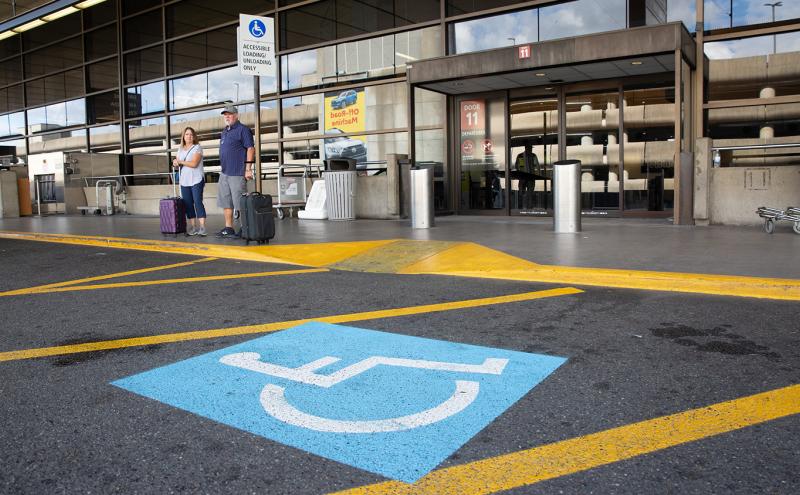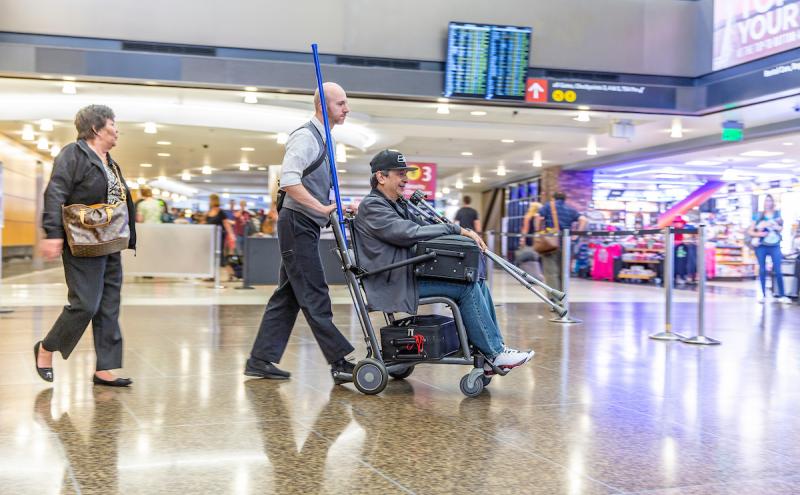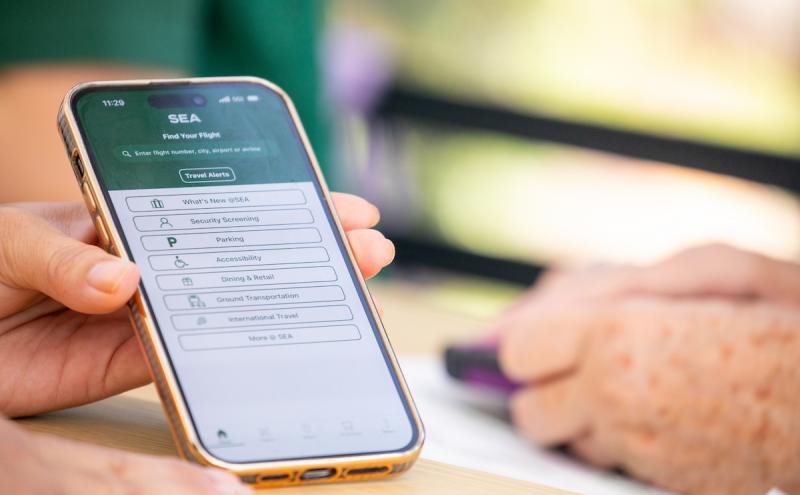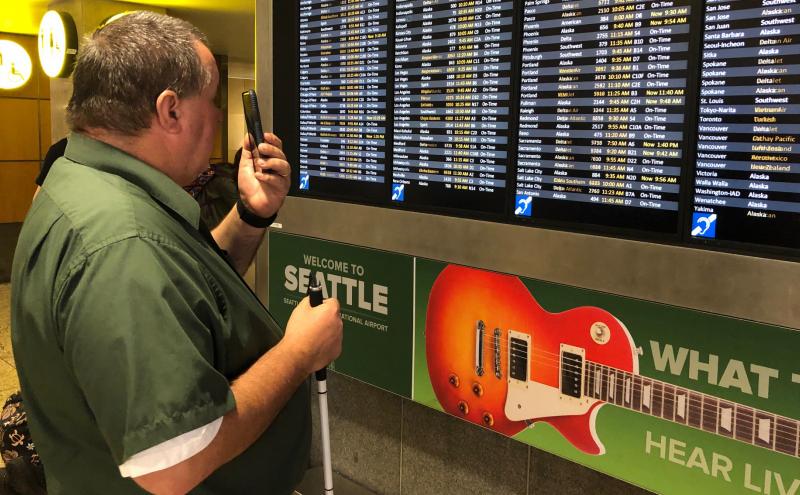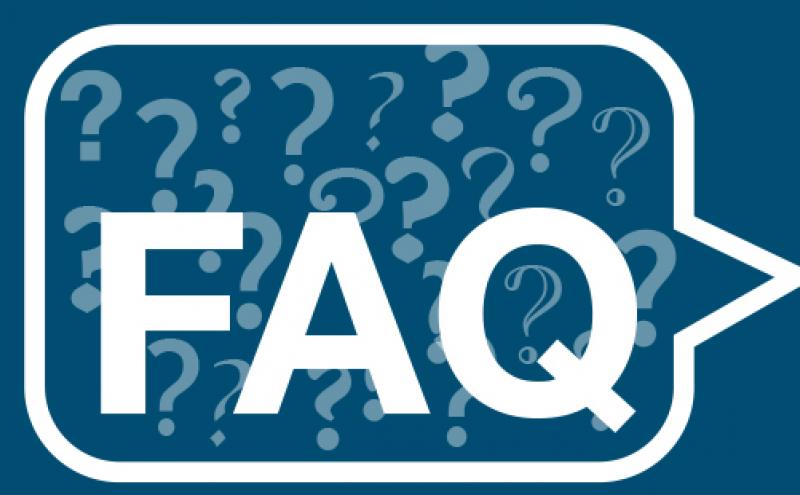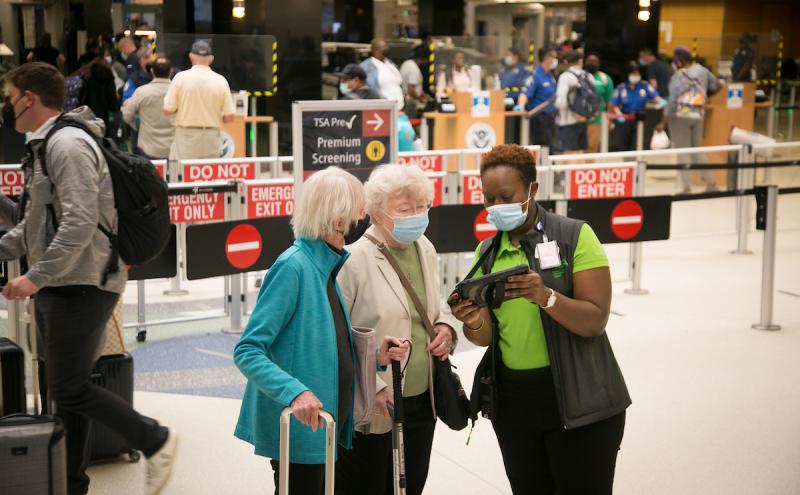
By Heather Karch and Chelsea Rodriguez
On July 26, 1990, the Americans with Disabilities Act was enacted to “prohibit discrimination against people with disabilities in several areas, including employment, transportation, public accommodations, communications and access to state and local government programs and services.” (Source: U.S. Department of Labor).
At Seattle-Tacoma International Airport, we’re celebrating 31 years of this landmark legislation and reaffirming our commitment to becoming the most accessible airport in the country. Today we’re focusing on hidden disabilities and programs that support travelers and reinforce our number one goal of being an inclusive and welcoming place for all. We’re always here to help you.
What are hidden disabilities?
A hidden disability is a chronic condition that may not be readily apparent or visible but can significantly impact a person’s life. It could include any of these conditions and more:
| Autism | Diabetes |
| Brain injuries | Epilepsy |
| Crohn’s Disease | Learning difficulties, including dyslexia, dyspraxia, dysgraphia, and language processing disorder |
| Chronic pain | Lupus |
| Cystic Fibrosis | Rheumatoid Arthritis |
| Depression, ADHD, Bipolar Disorder, Schizophrenia, anxiety, and other mental health conditions | Visual and auditory disabilities for those who don’t use visible support aids like glasses or hearing aids |
SEA Airport accessibility programs
In 2019 and 2020, Seattle-Tacoma International (SEA) implemented innovative initiatives to elevate the experience for passengers with hidden disabilities, increase engagement with stakeholders in the disability community, and improve communication with passengers about services.
These projects increased the awareness of hidden disabilities, provided a tool to help travelers prepare for a positive airport experience, created a space to ease stress during the travel experience, and provided a platform for disability community members to offer advice and input on SEA travel issues.
At SEA Airport, our approach to accessibility is like a three-legged stool supported through work in facilities, customer service, and community engagement.
1. Facilities
SEA Airport works hard to ensure that the physical landscape of the airport is accessible and accommodating to all travelers, including people with disabilities. SEA Airport has launched many features that help travelers with disabilities:
- A Sensory Room, a quiet oasis in a stimulating environment
- Improved wayfinding and signage optimized for people with disabilities
- SEA Social story and resource guide to prepare travelers for what to expect at the airport
- Accessible transportation
- An accessible terminal and parking lots
- Wheelchair services
- Relief stations for service animals
- Assistive technologies like Aira and T-coil hearing aid loops
2. Customer service
Helpfulness is built into our culture as an important pillar of our brand. We are always here to help and want you to have a great experience at SEA. One of the most important initiatives has been training the SEA Airport team to recognize people who need a little extra help and how to provide assistance. Just look for the Pathfinders and volunteers in the bright green gear or go to the information desk.
One great example is the SEA Social story and resource guide to prepare travelers and their caregivers for what to expect at the airport
Digital communications are also an important part of giving you elevated service and helping you get ready for your journey.
Accessible website
SEA Airport’s website was referenced as a positive example during a recent ODO Fostering Independence for Travelers with Disabilities webinar. The website has been:
- Optimized to easily locate important amenities, such as the Aira app service for passengers who are blind or low-vision, sunflower lanyards, the wheelchair reservation process, and more
- Updated with language, new frequently asked questions (FAQs) on accessibility, and useful links
- Modified to include a new Customer Service FAQ widget where customers ask questions and template responses based on topic. If you cannot find the answer on the FAQ widget, it will directly open a case with the Airport’s Customer Care team for personal responses to your questions.
FlySEA App
The FlySEA App is an airport directory in your pocket and an on-the-go guide to accessible services.
By clicking the accessibility button on the home page, you will find information on getting a wheelchair in the terminal, using hearing loop and Aira services, and how to get a sunflower lanyard for travelers with hidden disabilities.
3. Engagement
We collaborate with stakeholders in the disability community and rely on their input on new facilities and programs. For example:
- Learning from other organizations and airports regarding their accessibility programs and sensory rooms
- Including occupational therapists who specialize in these conditions and parents of children with disabilities in the design review for the Sensory Room
- Soliciting feedback and evaluation from organizations like the Open Doors Organization that evaluated the level of accessibility at SEA Airport in 2018
- Assembling a SEA Accessibility Advisory Committee with fresh voices and perspectives providing a constructive platform for discussing accessibility related initiatives, challenges, and opportunities
And we always love to hear from SEA travelers about how we’re doing. Here’s some feedback from your fellow travelers:
- “Love this program to support travelers with #Autism and other #invisibledisabilities”
- “I’m grateful for SeaTac sunflower program”
- “Little things like this make travel easier for ALL involved!”
And we’re especially proud of this shoutout from @christopher_ali:
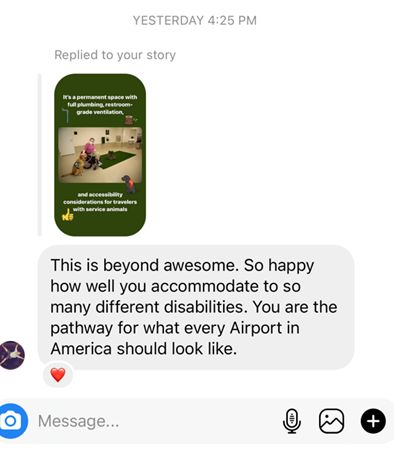
Share your thoughts on the following channels:
- Share your thoughts about the Sensory Room through an online survey
- Call or text to (206) 787-5388 or (800) 544-1965
- Tag on social media: @flySEA on Facebook, Twitter, and Instagram
- Send us an email [email protected]
- Fill out a Feedback Form
- Help produce travel content for people with disabilities by tagging us on social media and we'll get in touch
Future improvements
What's coming next? In the near future, SEA Airport will continue the quest for accessibility by:
- Opening the International Arrivals Facility with accessibility amenities including an adult changing table, Service Animal Relief Area, and nursing room;
- Expanding the volunteer program to better meet the needs of travelers with disabilities, and reflect our community; and
- Piloting a new airport dress rehearsal program (building on the success of the Wings for Autism event) to help travelers with disabilities to “practice” an upcoming travel experience
- Continued optimization of the website for people using assistive technology

